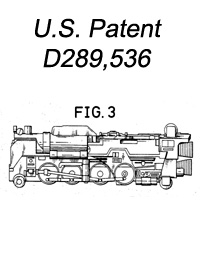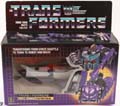As the Transformers G1 progressed in 1985, Hasbro reached deeper into Takara’s Diaclone toy design bin, collecting some of the more novel ideas, such as Triple Changers. One of the first Triple Changers was Astrotrain, who transforms into a black and purple JNR Class D51 steam locomotive, or a purple and white Boeing / Rockwell Space Shuttle Orbiter.
Origins
Astrotrain was sourced from a 1984 design by Koujin Ohno. The mold was not previously used, but its stylistic ties to Diaclone may be more than skin deep. Only two Triple Changers were released in Diaclone, with one becoming Blitzwing and the other, Helicopter Type, not selected for Transformers release. However, since Takara shifted gears directly from Diaclone to Transformers, it is likely that the design was intended for a second wave of Diaclone Triple Changers and simply subsumed into Transformers. It is uncertain if the Diaclone release would have differed in color, but it is conceivable that the Japanese Transformers black-and-white deco was planned for Diaclone. It is also worth noting that the arms were designed to extend at the gap below the shoulder, but the feature was deleted in the eventual production run. Astrotrain’s US Patent, titled Reconfigurable toy (aka Transformers G1 Astrotrain) was filed on January 14, 1985 (U.S. Patent No. USD289536 S).
Description
Astrotrain transforms into a Class D51 locomotive or a Space Shuttle Orbiter. The train mode features rolling wheels front and back, although most of the locomotive’s wheels are molded details on the skirt-like side panels of the train. The attention to detail was evident on Japan’s most-produced locomotive, and the proportions and features are very accurate (excepting the huge shuttle booster rockets on the rear). The train features a large section of die-cast metal in the front, painted in glossy black. The molded details on the plastic portions are likewise highlighted in black paint. The transformation to shuttle mode is largely accomplished by “unwrapping” the side panels of the train to form the wings and sides of the shuttle. The shuttle’s cockpit is rotated out from the front of the train’s boiler, hidden behind a pair of white doors. A vertical rudder slides out from the center of the train’s undercarriage. Despite such a simple transformation, the shuttle accomplishes a major palette shift to include a whitish gray fuselage and rudder. The Japanese deco enhances this by painting the wing tops white as well.
Astrotrain’s robot transformation is equally as straightforward. After stowing the shuttle nose, the front section pulls down to become his legs. The arms pull out from the sides, the head is revealed from beneath the shuttle boosters, and the rudder splits open to form a chevron-like chestplate. His articulation is severely limited. Despite having ball-and-socket shoulders, the chestplate blocks most forward rotation of the stubby arms. He can wield a huge purple rifle in this mode, but only pointed down or to the side, unless the chestplate is folded away.
Collector Notes
Astrotrain’s brick-like design grants solid feel from the heavy use of die-cast metal. His straightforward layout also makes him very resistant to breakage compared to his peers. Unfortunately, the large swaths of painted die-cast tend to be very prone to paint chipping, especially since they face the ground in shuttle mode
Variants
Astrotrain has a few variations of the course of his production run. The most notable regards the leading edge of the shuttle wing. Very early production had an extension that blended into the front side panel of the shuttle, with a semicircular slot to wrap around the panel hinge, However, this area interfered with easy transformation, and was prone to snagging and breaking. It was quickly replaced by a wing edge that was squared off and could not interfere with the panel. The Japanese issue of Astrotrain differed heavily, using an all-black deco for the train mode, and using extensive white paint on the shuttle mode, as well as stickers reading “NASA&rdquo”and “United States”. Japan released a verion using the US deco the following year.
Availability
Astrotrain was available in 1985 worldwide, and again in 1986. In Japan, the black and white version was released in 1985, and the Hasbro purple deco was issued in 1986. He was reissued in Japan in The Transformers Collection in 2004; this version used an updated form of the original Takara black-and-white deco.
Redecos & Retools
Astrotrain’s mold was redecoed to create Collector’s Edition Astrotrain Proto Color Version in 2004.
















